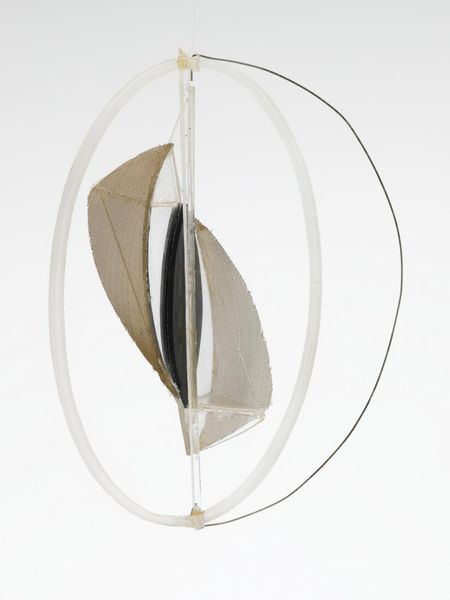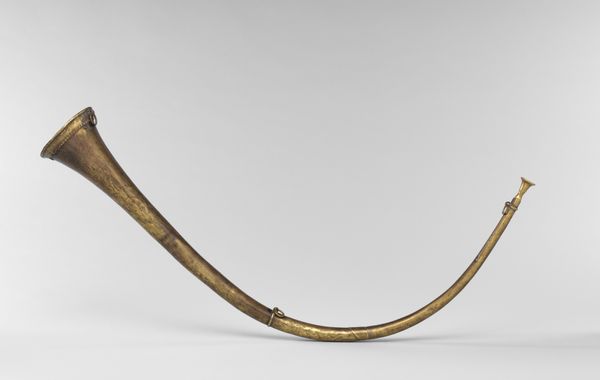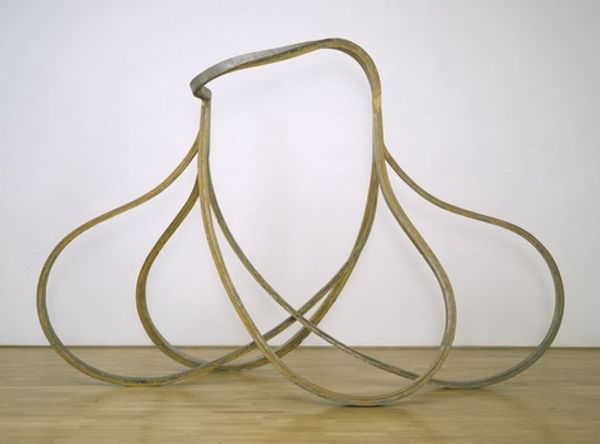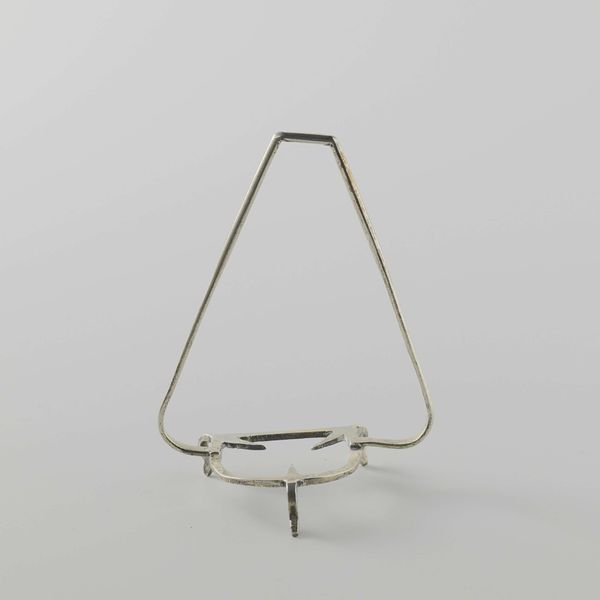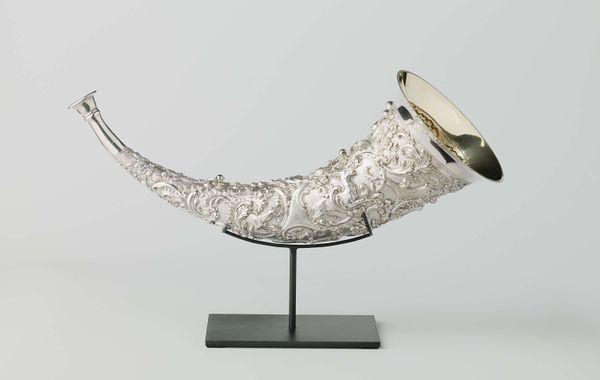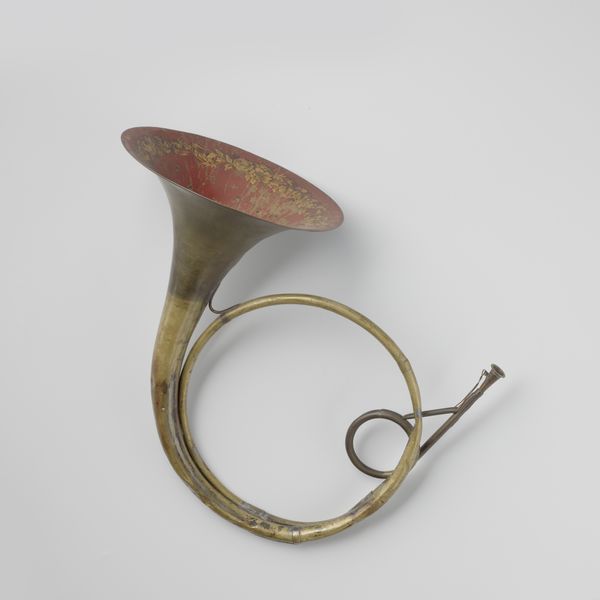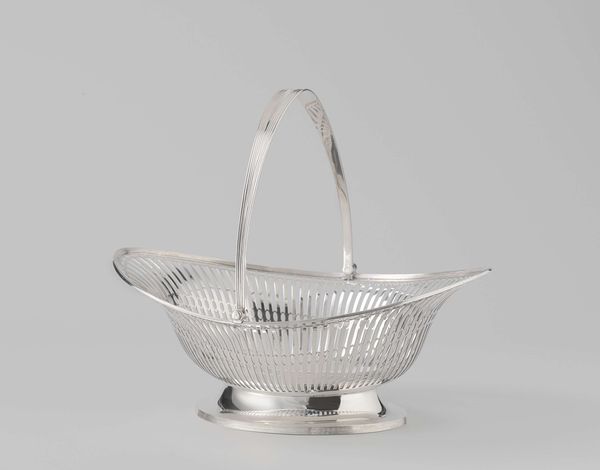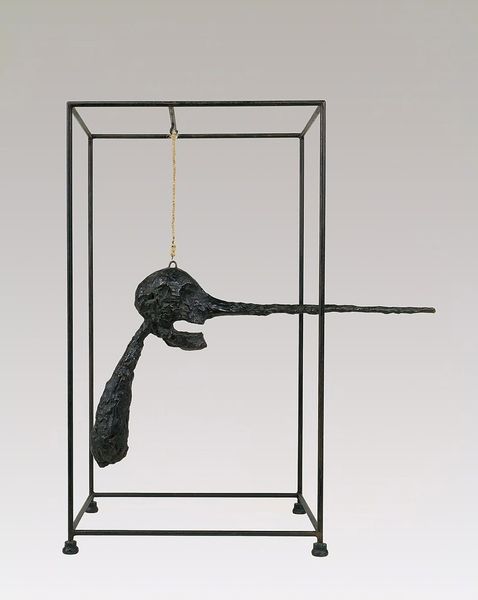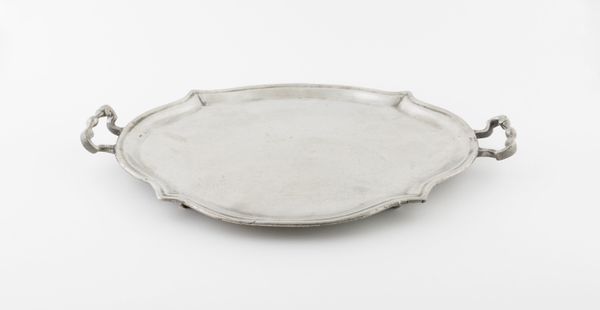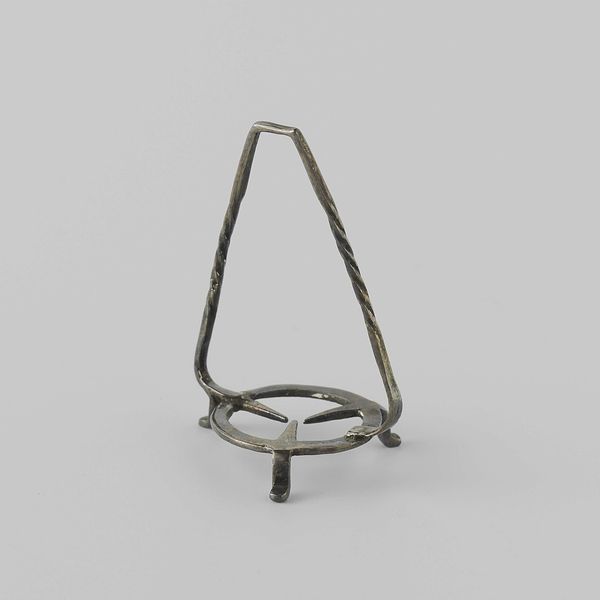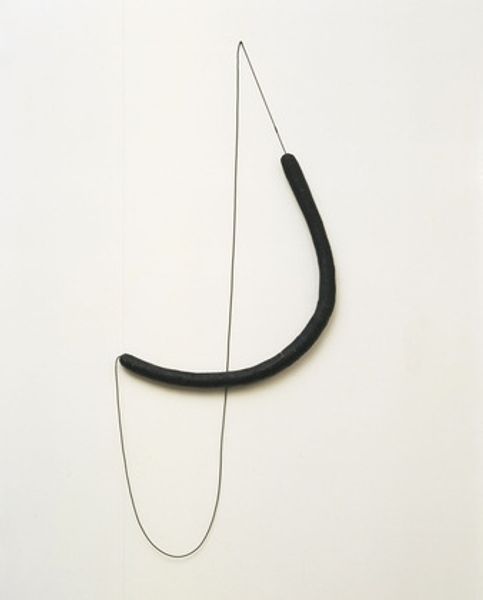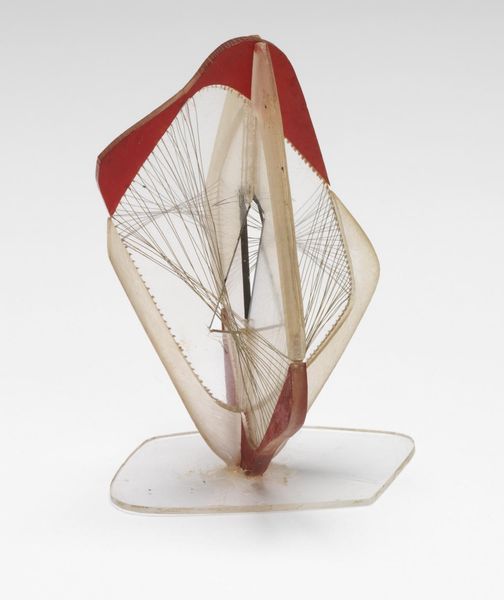
metal, found-object, sculpture
#
portrait
#
rounded shape
#
metal
#
found-object
#
sculpture
#
miniature
#
realism
Dimensions: height 80 cm, width 42 cm, depth 42 cm
Copyright: Rijks Museum: Open Domain
Editor: So this piece is titled "Model of a Life Buoy" made around 1826 by A. Scheerboom. It's a sculpture using metal and a found object. I’m struck by the contrast of the sleek metal support with the worn-looking, dark life preserver. What do you see in this piece from a formalist perspective? Curator: The stark juxtaposition is certainly key. Note the interplay of the geometric – the severe ellipse of the metal frame – with the organic, slightly irregular form of the life buoy itself. Observe the artist's deliberate compositional choice to place the heavy, dark mass of the buoy off-center, creating a dynamic tension. Editor: Yes, and the materiality seems very important. What is your reading of how the materials are being used? Curator: Exactly. The patinated, perhaps even distressed, surface of the life buoy suggests a history, a past use. Consider the subtle textures - the possible stitching or wrappings, the variations in tone across the black surface. Contrast this with the smooth, reflective quality of the metal. It’s not just what they *are*, but how their interaction produces meaning. Do you notice how the thin line of the metal accentuates the density of the ring? Editor: I do, it really draws attention to the ring's form and texture. So, the relationship between the shapes and textures creates the interest? Curator: Precisely. Formalism posits that the artwork's meaning resides in the arrangement and interplay of these elements. One might say that this artwork is an examination of the relation of line, form and volume as abstract signifiers of their everyday function. Editor: That's really insightful. I'm beginning to appreciate the artist's choices and how they contribute to the overall aesthetic impact beyond its function. Curator: Indeed. Close formal observation provides a rich, layered understanding that simply focusing on representation can obscure.
Comments
No comments
Be the first to comment and join the conversation on the ultimate creative platform.
